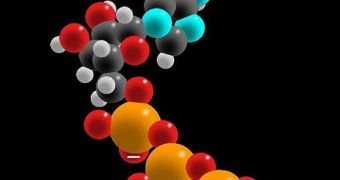Abiogenesis is the term used in the international scientific community to refer to the process through which life emerged from inanimate matter several billion years ago. Research groups around the world have provided explanations for it through theories, but the issue is that several of these attempts collide head-on, and provide contradictory accounts. Now, in a study that may shed even more light on the origins of life on Earth, experts discover a compound that may have given the earliest lifeforms enough energy to survive. The team behind the work says that chemical is called pyrophosphite.
The research group, based in the United Kingdom at the University of Leeds, believes that the chemical may have played a crucial part in the earliest days of primitive organisms. “It's a chicken and egg question. Scientists are in disagreement over what came first – replication, or metabolism. But there is a third part to the equation – and that is energy,” explains UL professor Dr Terry Kee, who was also the leader of the investigation. The scientist says that living things today use the multi-functional energy molecule called adenosine triphosphate (ATP) for sustaining life's basic functions. The 250 grams of ATP found in the human body contain the energy equivalent of a single AA battery.
The supply is being constantly regenerated in all living cells, in the presence of enzyme catalysts, through a well-known process called respiration. “You need enzymes to make ATP and you need ATP to make enzymes. The question is: where did energy come from before either of these two things existed? We think that the answer may lie in simple molecules such as pyrophosphite which is chemically very similar to ATP, but has the potential to transfer energy without enzymes,” Kee says. Both ATP and pyrophosphite contain the same “active” ingredient, the chemical phosphorus. The element can be found in DNA strands, as well as in cellular walls.
The origins of phosphorus on Earth are still a matter of debate. A leading idea is that the chemical was brought here by meteorites colliding with our planet during the Great Bombardments. These were times in the early days of the solar system when all inner planets were battered with meteorite, asteroid and comet strikes. “Phosphorus is present within several meteoritic minerals and it is possible that this reacted to form pyrophosphite under the acidic, volcanic conditions of early Earth,” the Leeds expert says. Details of the team's work appear in the latest issue of the esteemed scientific journal Chemical Communications.

 14 DAY TRIAL //
14 DAY TRIAL //